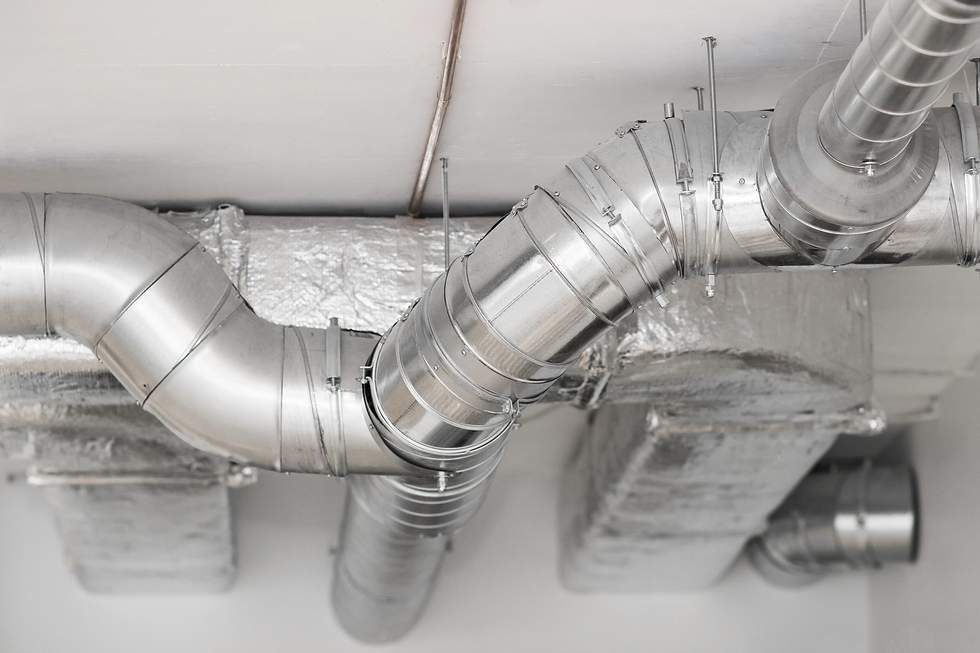Having a clean air environment is crucial for both your home and office spaces. However, one often overlooked aspect of maintaining indoor air quality is the state of your ductwork. Recognizing the signs of contaminated ductwork early can save you from health risks and costly repairs. This article will guide you through the indicators that your ducts may need cleaning and the steps you can take to ensure healthy air circulation.

Understanding Ductwork Contamination
Before we dive into the signs, it is essential to understand what ductwork contamination is. Over time, dust, mold, and other pollutants can accumulate in ducts, potentially dispersing harmful particles every time you turn on your HVAC system. This situation can not only affect the quality of the air but also lead to various health concerns.
How Does Ductwork Get Contaminated?
Several factors contribute to ductwork contamination, including lack of maintenance, poor filtration, or even pest infestations. When ducts are neglected, these contaminants can build up and affect the overall efficiency of your HVAC system.
Signs Your Ductwork Might Be Contaminated
Unpleasant Odors
Unpleasant odors emanating from the air vents is a clear sign of problems. These smells might come from mold or mildew buildup, or from trapped debris within the ducts themselves. If you notice a persistent musty smell, it might be time to have your ductwork evaluated.
Visible Dust and Debris
When you start seeing visible dust and debris around the vents and on surfaces more frequently, this might indicate contaminated ductwork. Dust and debris in large amounts can suggest that your ducts are no longer efficient at filtering out pollutants.
Mold Growth
Finding mold growth near vents or in the ductwork is a significant warning sign. Mold can be hazardous to health, causing allergies and respiratory issues. If mold is visible, it’s essential to address the issue immediately by seeking professional cleaning.
Increase in Allergies or Asthma Symptoms
If building occupants suddenly experience increased allergy or asthma symptoms, contaminated ducts might be the culprit. Allergens like dust mites and pollen can circulate through contaminated ducts, aggravating these health conditions.
Health Risks of Contaminated Ductwork
Contaminated ductwork doesn’t only affect air qualityit poses health risks too. Prolonged exposure to pollutants from unclean ducts can lead to respiratory problems, skin irritations, and even contribute to chronic health issues over time.
Respiratory Issues
Breathing in air containing pollutants from dirty ducts can trigger or worsen respiratory issues. Symptoms such as coughing, sneezing, and shortness of breath might occur more frequently if your ducts are compromised.
Skin Allergies
The presence of mold and dust in the air can also lead to skin allergies, causing rashes or itchy skin. Individuals with sensitive skin or pre-existing skin conditions might notice their symptoms worsening.
Steps to Take If You Suspect Contamination
Conduct an Inspection
The first step towards resolving ductwork contamination is conducting a thorough inspection. This can be done physically by checking air ducts and vents for dust and mold buildup.
Professional Duct Cleaning
Once you’ve identified the problem, hiring a professional duct cleaning service ensures a thorough cleanse. Professionals have specialized equipment to safely remove contaminants without spreading them into your living spaces.
Preventative Measures
Post-cleaning, it’s important to implement preventative measures. Regular maintenance and using high-efficiency particulate air (HEPA) filters can help in reducing future contamination and keeping your indoor environment healthy.
The Importance of Regular Ductwork Maintenance
Regularly maintaining your ductwork not only ensures air quality but also helps in prolonging the life of your HVAC systems. Checking for leaks, changing filters regularly, and keeping a maintenance schedule are crucial steps.
Cost-Effectiveness of Timely Cleaning
Investing in regular maintenance ultimately saves money. Timely cleaning prevents major contamination that would require more expensive repairs or replacements down the line.

FAQs About Ductwork Contamination
What causes ductwork to become contaminated?
Ductwork becomes contaminated through the accumulation of dust, mold, and debris over time. Lack of maintenance and inadequate filtration systems can exacerbate the problem.
How often should ductwork be cleaned?
It is generally recommended to have your ductwork cleaned every 3 to 5 years. However, this could be more frequent depending on your environment and if anyone in the home struggles with allergies.
Can contaminated ductwork affect HVAC efficiency?
Yes, dirty ductwork can restrict airflow, forcing your HVAC system to work harder. This not only reduces home comfort but also increases energy consumption.
To learn more about the importance of quality air duct maintenance, consider reading this valuable resource on the benefits of clean air ducts.
This article contains affiliate links. We may earn a commission at no extra cost to you.